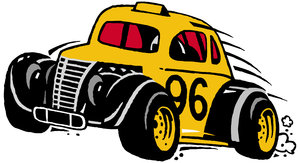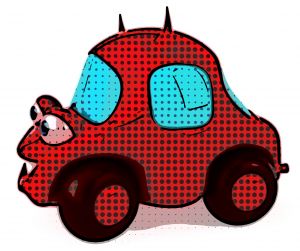When you think of car accidents, you oftentimes think of two vehicles colliding into each other. What is commonly overlooked is the dangers that lie within the car through the withering heat of the summer season. As the weather continues to warms up throughout the state, parents and guardians are urged to be extremely cautious of the heat and the risks that are associated with child heatstroke deaths in Boston and elsewhere.

According to the National Highway Traffic Safety Administration (NHTSA), there were nearly 35 fatal incidents reported throughout the nation in 2009 because of heat-related car accidents. Heatstroke is in fact the number one cause of non-crash, vehicle-related fatalities for kids who are under the age of 14. Now, the NHTSA will be launching a brand new nationwide campaign to help prevent these kinds of accidents, urging both parents and caregivers to think “Where’s baby? Look before you lock.”
Our Boston child injury lawyers understand that heatstroke, or “hyperthermia,” is a very real threat here in Boston and elsewhere throughout the state. Some of the most common injuries resulting from heatstroke from cars in children, aside from death, is loss of hearing, blindness and permanent brain injury. These are not only injuries that can cause a lifetime of pain and suffering, but they’re also injuries that can be completely avoided.
“This campaign is a call-to-action for parents and families, but also for everyone in every community that cares about the safety of children,” said U.S. Transportation Secretary Ray LaHood.
The campaign will be spreading its word via online and radio ads. Later on in the summer, the Administration will be releasing its findings on just how effective after-market products are — the ones used to help prevent a child from being accidentally left in a vehicle.
Here’s how it happens: A child suffers a fatal heatstroke injury after being left in a vehicle alone. It can also happen when a child has access to an unlocked car and is not being supervised by an adult. Oftentimes children fall asleep in vehicle, and with their lack of noise they’re unknowingly left in the vehicle.
There’s no specific demographic that’s more susceptible to these kinds of accidents. Families of all walks of life are vulnerable to these kinds of situations when not paying attention. That’s why the NHTSA is launching this new campaign, to help to raise awareness and to help parents and guardians to remember children and reduce the risks of a non-crash, vehicle-related accident.
Parents are reminded to:
-Never leave a kid in a vehicle unattended.
-Make a habit of looking in the vehicle before getting out and locking it up.
-Ask daycare centers and other childcare providers to notify you immediately if your child is unaccounted for.
-Teach your kids that a vehicle is not a playground.
Continue reading
 Boston Car Accident Lawyer Blog
Boston Car Accident Lawyer Blog









